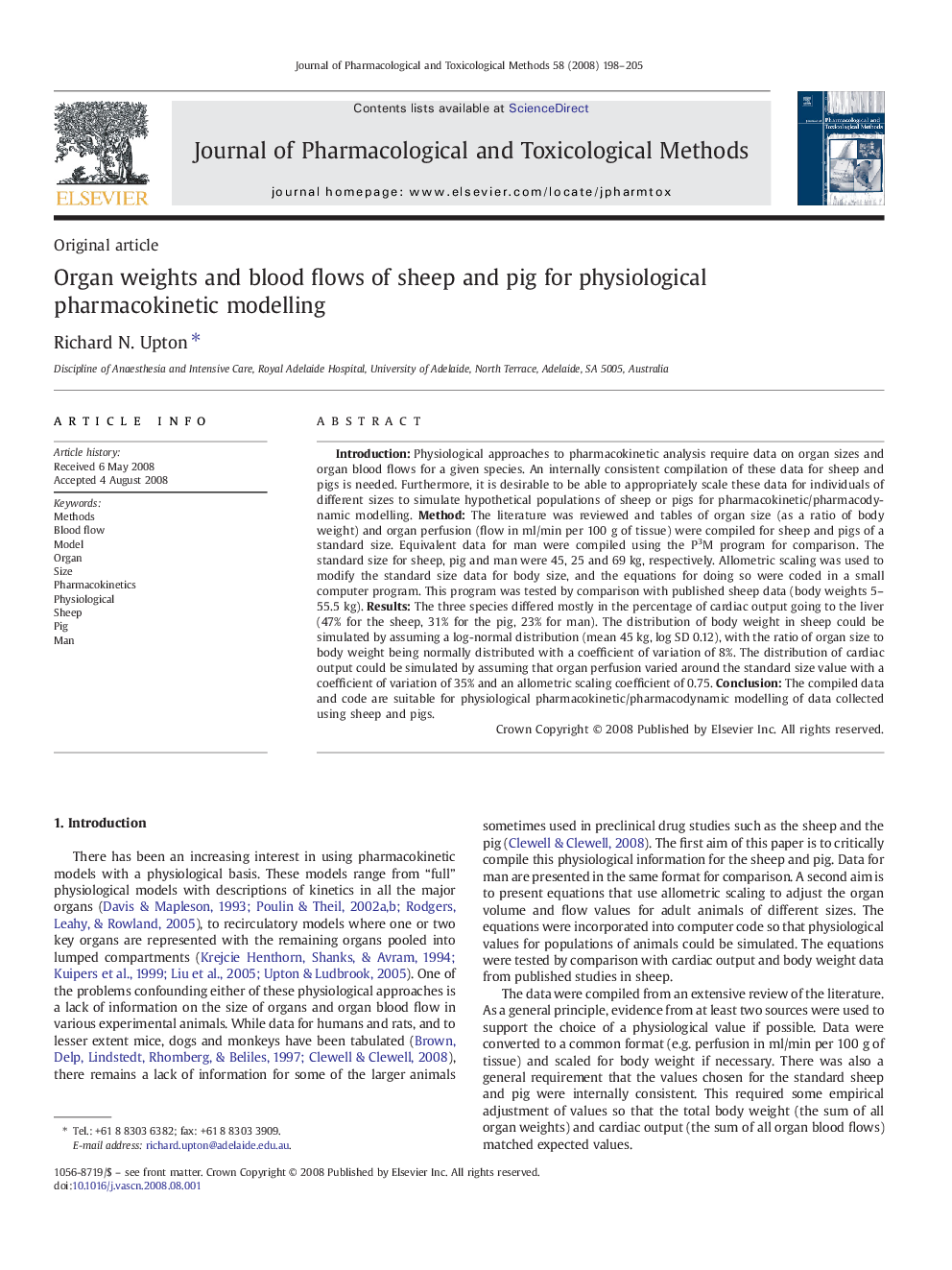| Article ID | Journal | Published Year | Pages | File Type |
|---|---|---|---|---|
| 2550298 | Journal of Pharmacological and Toxicological Methods | 2008 | 8 Pages |
IntroductionPhysiological approaches to pharmacokinetic analysis require data on organ sizes and organ blood flows for a given species. An internally consistent compilation of these data for sheep and pigs is needed. Furthermore, it is desirable to be able to appropriately scale these data for individuals of different sizes to simulate hypothetical populations of sheep or pigs for pharmacokinetic/pharmacodynamic modelling. Method: The literature was reviewed and tables of organ size (as a ratio of body weight) and organ perfusion (flow in ml/min per 100 g of tissue) were compiled for sheep and pigs of a standard size. Equivalent data for man were compiled using the P3M program for comparison. The standard size for sheep, pig and man were 45, 25 and 69 kg, respectively. Allometric scaling was used to modify the standard size data for body size, and the equations for doing so were coded in a small computer program. This program was tested by comparison with published sheep data (body weights 5–55.5 kg). Results: The three species differed mostly in the percentage of cardiac output going to the liver (47% for the sheep, 31% for the pig, 23% for man). The distribution of body weight in sheep could be simulated by assuming a log-normal distribution (mean 45 kg, log SD 0.12), with the ratio of organ size to body weight being normally distributed with a coefficient of variation of 8%. The distribution of cardiac output could be simulated by assuming that organ perfusion varied around the standard size value with a coefficient of variation of 35% and an allometric scaling coefficient of 0.75. Conclusion: The compiled data and code are suitable for physiological pharmacokinetic/pharmacodynamic modelling of data collected using sheep and pigs.
